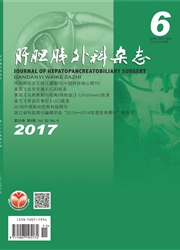

 中文摘要:
中文摘要:
目的探讨核因子-kB(NF-kB)活性在创伤性炎症大鼠肝脏损伤中的变化及其意义。方法Wistar大鼠60只,随机分成对照组和创伤性是症组。运用匀浆法提取肝细胞的核蛋白,运用凝胶阻滞实验检测创伤性炎症术后肝脏组织NF-kB的活性,检测血浆转氨酶的水平,在光镜下观察肝细胞损伤程度,电镜下观察肝脏超微结构改变,以线拉体的肿胀程度作为肝细胞损伤的评价指标。结果大鼠创伤性炎症术后第3小时,肝脏NF—kB的活性开始升高,第12小时达高峰,第72小时后基本降至正常。血浆ALT含量在伤后明显上升。于第24小时达高峰,同时肝细胞出现明显的水肿、变性和坏死,肝小叶结构破坏明显。结论大鼠创伤性炎症肝脏损伤后,NF—kB活性明显升高。与肝脏结构和功能改变基本一致,NF—kB在创伤性炎症肝脏损伤中具有重要意义。
 英文摘要:
英文摘要:
ObJective To study the changes of DNA binding activity of nuclear factor kappaB and it's significance in liver damage after traumatic inflammation. Methods Sixty wistar rats were randomly divided into 2 groups: control group and traumatic inflommation group, These rats were sacrificed in the 3th, 6th, 12th, 24th, 48th, 72th hour postoperatively. The contents of plasma ALT were determined. Hepatocytes were isolated and nuclear protein was extracted, DNA binding activity of NF-kB was measured with EMSA. The degree of hepatocytic necrosis was observed under light microscope and the ultrastructural changes of liver under electron microscope. Results After traumatic inflammation, DNA binding activity of NF-kB increased and reached peak after 12h. Plasma ALT levels were markedly increased, at the same time, degeneration, edema and necrosis were observed in the hepatocytes. All these changes were positive correlation with the changes of DNA binding activity of NF- kB. Conclusion After traumatic inflammation, DNA binding activity of NF- k B increases and it is positive correlation with the liver damage, NF-kB can play important roles on liver damage after traumatic inflammation.
 同期刊论文项目
同期刊论文项目
 同项目期刊论文
同项目期刊论文
 期刊信息
期刊信息
